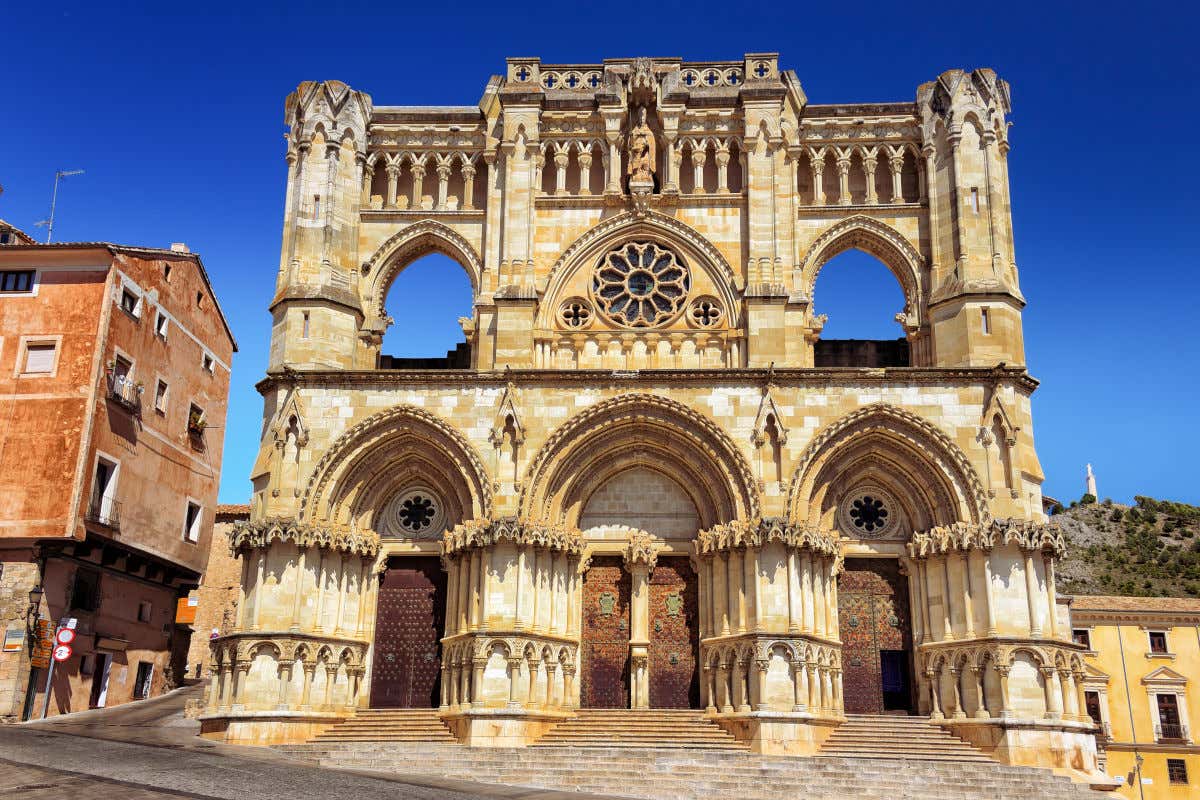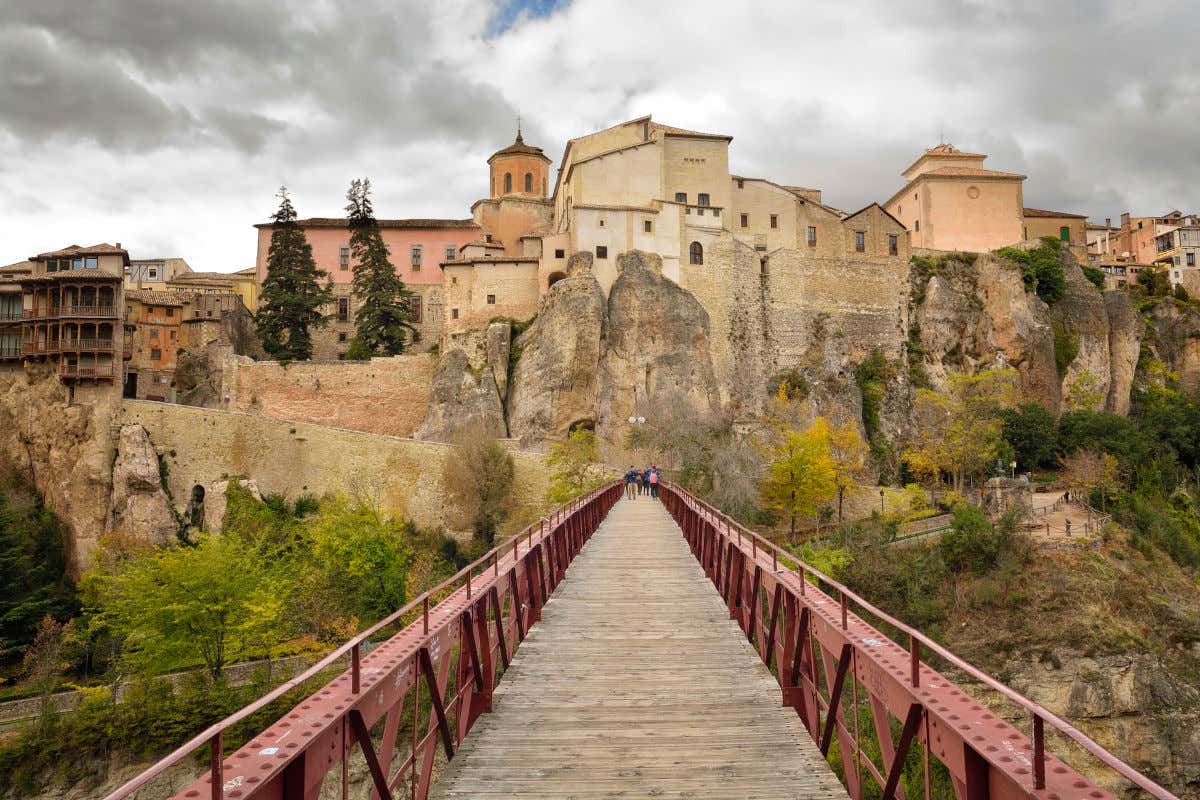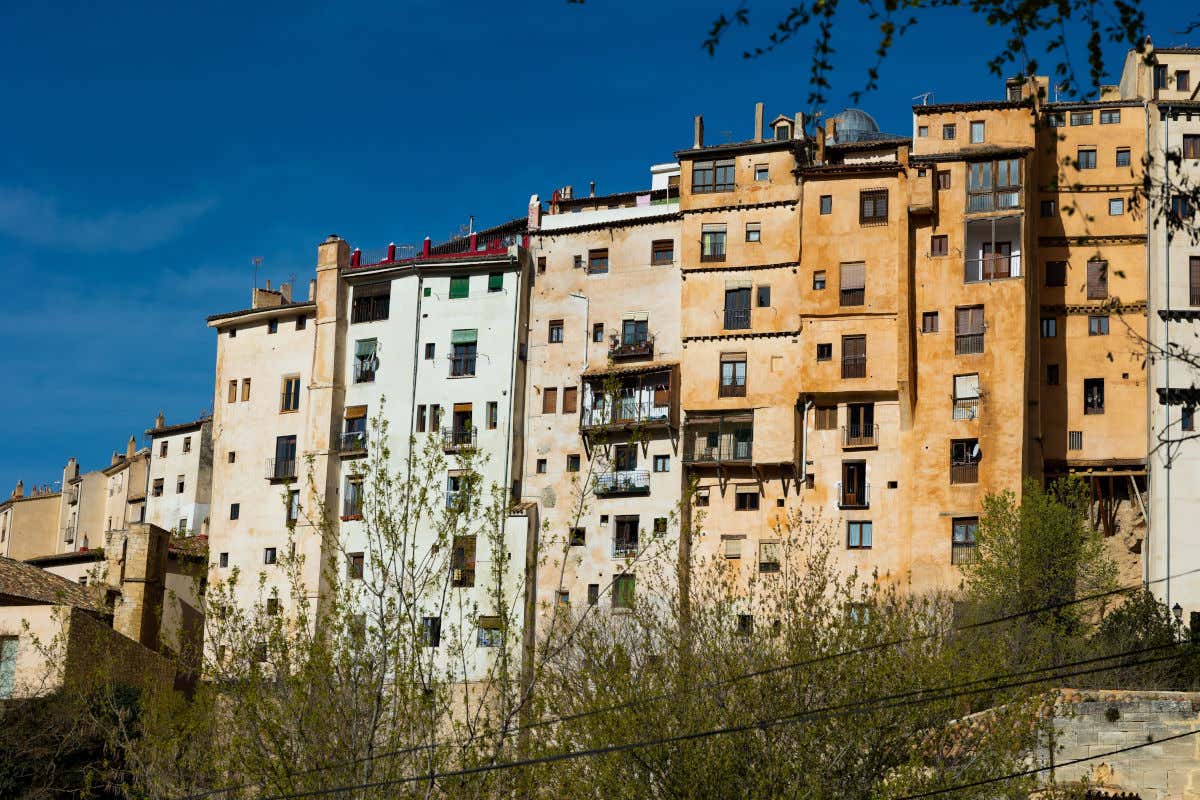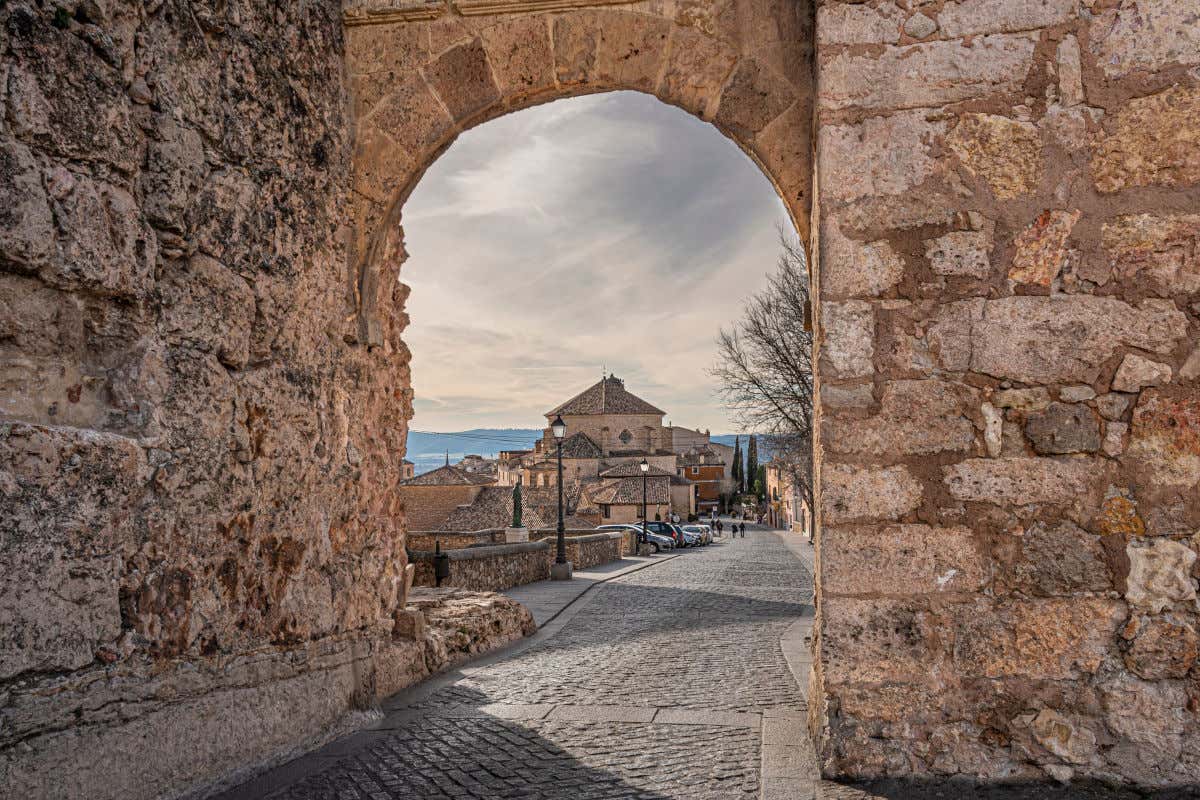Cuenca in a day

From the iconic Casas Colgantes, the San Pablo Bridge, the Plaza Mayor, to the skyscrapers of the San Martin neighborhood, these sights are only some of the highlights located in this quiet UNESCO World Heritage City. If you’re thinking of visiting Cuenca and have only one day to explore the city, Civitatis has made it easy for you with this guide that features a selection of the city’s top landmarks.
The Cathedral of Cuenca, a symbol of the city

Just like many other Spanish cities, one of the most renowned monuments to see in Cuenca is its main cathedral. The construction of the cathedral of Santa María and San Julian began in the 12th century, when King Alfonso VIII succeeded in conquering Cuenca, which previously held by the Muslims.
The cathedral of Cuenca is a perfect blend of many architectural styles. From the Gothic elements of its foundation, through its Renaissance cloister or its neo-Gothic facade, built in the twentieth century after the collapse of one of its towers. In addition, its stained glass windows provide some color and warmth to its interior that surprises all visitors.
Also, the Cathedral is located in the Plaza Mayor of Cuenca, an ideal place to have a drink in one of its terraces. From here you can also see the City Hall, declared a monument of Cultural Interest, the convent of the Petras, and the many colorful houses that decorate this place.
The San Pablo Bridge and the Casas Colgadas, two of Cuenca’s must-see sites

Is there perhaps a more fascinating sight to see in Cuenca than the Casas Colgadas (Hanging Houses)? These beautiful civil constructions were built between the 13th and 15th centuries. They are perfectly integrated into the landscape on high cliffs with wooden balconies overlooking the Huécar River at a height of more than 60 meters (200 feet). Also, the Museum of Spanish Abstract Art of the Juan March Foundation is located here.
To enjoy one of the best views of the Casas Colgadas, we recommend crossing the bridge of San Pablo. This viaduct was erected in stone back in the 16th century, although the one we can see today is made of wood and iron and dates from 1902. The panoramic view of the Huécar Gorge and the historic center of Cuenca makes for a really impressive sight.
The Mangana Tower

Although it’s not as famous as the Hanging Houses, there is no denying that the Mangana Tower is a must-see landmark in Cuenca. Its origin is not exactly known, but it’s believed that it was first erected in the 16th century, on the ruins of the old Arab citadel, to serve as a lookout point. Since then, this space has undergone several alterations before taking on its current neo-Mudejar style.
The tower is listed as a Cultural Interest Asset and the square in which it sits offers amazing views of the city and the Huecar River.
The “skyscrapers” of the San Martin neighborhood

Yes, you heard it right! You can find skyscrapers in Cuenca. Or, at least, as far as the name is concerned. The skyscrapers in the San Martin neighborhood may not be as tall as those in New York, but it’s clear that they give a very unique vibe to the historic center of this World Heritage City.
The funny thing about these buildings is that their height is different depending on the place from which you look at them. Walking down Alfonso VIII Street, for example, they may seem like three or four-story buildings. However, as you walk along them, they can reach eleven stories. This quirk is due to its unique construction, which takes advantage of the natural forms of the mountains in a really unusual way.
The castle and its medieval vestiges

Although little remains of the ancient castle of Cuenca, visiting its ruins is well worth it. The monument, Arab in origin, is located at the top of the city and it’s still possible to walk along the ruins of its walls and admire the Bezudo Arch, one of the ancient gateways to the walled city.
In addition, in the surroundings of the fortress, you’ll find the Florencio Cañas viewpoint and the viewpoint over the Jucar River.
The Enchanted City and its peculiar rock formations

Have you already visited everything there is to see in Cuenca in 1 day? Well, there are many more charming places to visit. This guide is, after all, a compilation of some of the most popular attractions and must-see monuments if you’re going to be in the city for a short time.
However, if you have a few hours to explore beyond the historic center of Cuenca, you should definitely check out the Enchanted City, a place classified as a Natural Site of National Interest. You’ll walk down a fairytale-like path and admire amazing landscapes of karstic origin.







